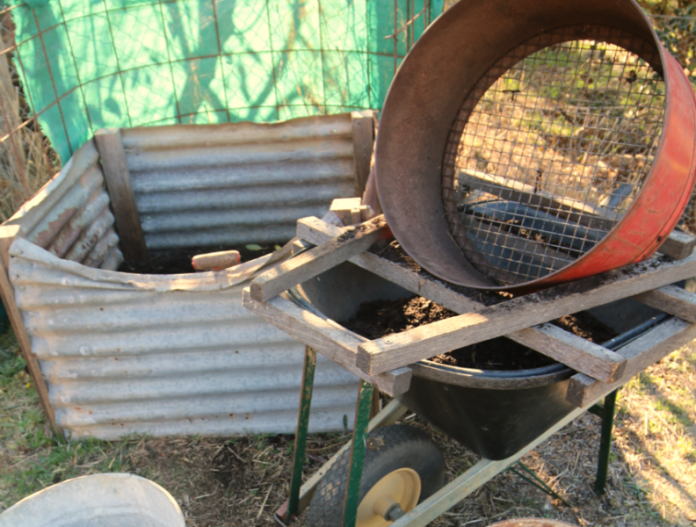
When we have a fully cured, finished compost pile, ready to spread on the garden, we will still see a range of coarse, recognisable ingredients in the compost that have not been fully integrated into the gluey goodness of the compost structure.
All the nitrogen-rich food scraps should be well gone (though we might see some citrus peel, avocado skins and seeds and egg shells). Softer carbon-rich ingredients, like leaves should be all gone, but some coarser straw might still be recognisable, just. But the majority of what remains un-integrated in the finished compost will be the woody lignin-rich ingredients we have added to the pile, either as bedding – down the bottom of the pile – or as additional texture to give aeration to our recipe.
We can just leave these woody residues in place when spreading the compost on our gardens, in fact, if I’m composting fruit trees, I’m happy to have the extra woody mulch under the trees.
But I am a bit cautious about adding too much woody material to my veggie beds. Wood is high in potassium, and when we’ve been adding compost to gardens for many years, we can end up with soil too high in potassium and potentially throwing other nutrients out of balance. So, I prefer to sieve my finished compost before it goes out on veggie beds.
I use a big garden sieve, made out of an old oil drum with 25mm mesh on the bottom (gaps are more like 23mm), but a sheet of 25mm mesh over a wheel barrow, or propped over a tarp will work too. If the holes in the mesh are much finer than 20mm, we will find that good, rich, gluey, moist compost just won’t pass through the holes, and we don’t want to dry our compost out (even if it makes it easier to sieve!).
We don’t want to overly disturb the finished compost structure, so if we are going to sieve, best to do it just before spreading it on our garden beds.
When sieving, I keep three bins at hand. One to take any plastic residue I find in the pile (always more than I think possible). Another bin to collect the cleaned bones and shells that will later be burned for bone meal. The last bin is for all the coarse carbon-rich material that doesn’t go through my 25mm sieve.
This coarse residual material is my absolute favourite structure building ingredient for adding back into the next compost pile I layer up. These woody leftovers have already survived one pass through a hot compost pile, and will be partially broken down and already teaming with microbial life that will have already started the decomposition process, and will swiftly inoculate our next pile.
The sieved finished compost is then ready for the garden, potting or seed raising mixes. We want to use our sieved compost promptly, as it will die if we leave it to dry out.
– Joel Meadows works with *Yes In My Back Yard, (YIMBY), a community-scale composting initiative in Castlemaine and surrounds. Send questions or comments to hello@yimbycompost.com, or to book in for a compost workshop.







